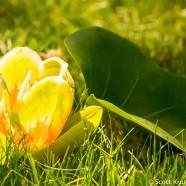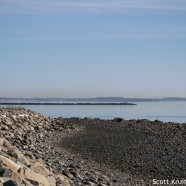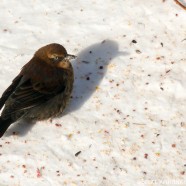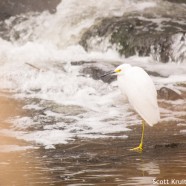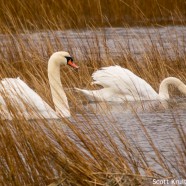Tulip Tree Flower
I noticed this Tulip Tree flower on the ground only because it was lit by one ray of sunlight in the shade. The leaves have popped here, there and everywhere! We are really getting that late spring feel to the weather this week. If you can let that lawn grow up a little this summer please do. It helps all of our pollinators, means less pollution, saves your time, money and energy, and can even provide a better habitat for some of our birds. Scott Kruitbosch Conservation & Outreach Coordinator
Read MoreAir Pollution in New York and Connecticut
Here’s the view from Stratford Point in Stratford, Connecticut on a recent March morning. There was no wind to speak of, even here on the coast, or throughout the Long Island Sound region. This lack of mixing in the surface air and atmosphere meant that haze and abundant air pollution was remaining directly over land and readily apparent. It did not take long for a sea breeze to develop as the day warmed followed by a light regional southerly flow, cleansing what was sitting on top of us. Nevertheless, it is stark reminder of what we are putting into the air we breathe while...
Read MoreRusty Blackbird Blitz 2015
Rusty Blackbirds: Looking Forward, Looking Back Authors: Judith Scarl, International Coordinator, Rusty Blackbird Spring Migration Blitz (www.rustyblackbird.org) Scott Kruitbosch, Conservation & Outreach Coordinator, Roger Tory Peterson Institute of Natural History (www.rtpi.org) Connecticut Coordinator, Rusty Blackbird Spring Migration Blitz A female Rusty Blackbird huddles on a Minnesota rooftop during a blizzard, fluffing herself into a ball to keep warm. A male flips leaves in a roadside ditch in Maryland, navigating partially frozen mud to hunt for spring’s first invertebrates. A...
Read MoreSnowy Egret in December
I photographed this Snowy Egret last weekend in Stratford, Connecticut, as part of a Christmas Bird Count. It is one of only several recorded anywhere in the state in the last few decades during a CBC period. Climate change certainly has helped many new species pop up on these late autumn/early winter December days when they would normally be long gone to our south. I cannot blame the climate fully when accounting for this long-legged wader because while it appears to be perched at the edge of a coastal river or stream any waterbird would love, the water here is actually the outflow from a...
Read MoreMute Swans (Cygnus olor)
If you live in the Chautauqua-Allegheny region of Western New York you are far more accustomed to spotting Tundra Swans rather than these Mute Swans (Cygnus olor), a beautiful species that likely takes the title for most attractive non-native invasive bird in North America. Mute Swans call Eurasia their homeland but were brought to North America by humans and have taken up residence in a number of areas since the late 19th century, especially those in the east and near suburban areas and cities. They are a threat to native waterfowl because of how aggressive they are, a behavior I can attest...
Read More



